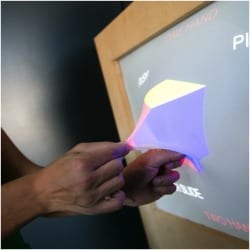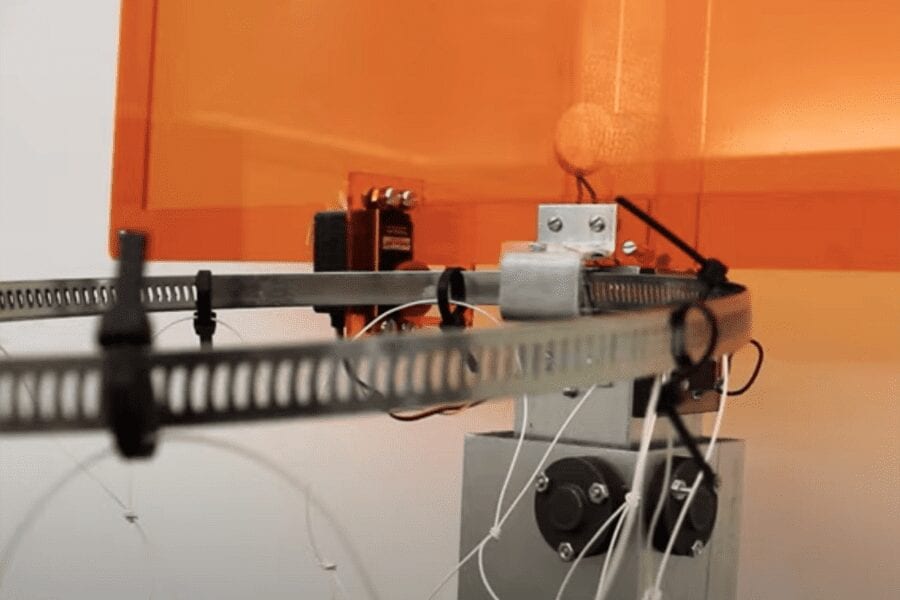
Exciting new technologies, which allow users to change the shape of displays with their hands, promise to revolutionise the way we interact with smartphones, laptops and computers. Imagine pulling objects and data out of the screen and playing with these in mid-air.
Today we live in a world of flat-screen displays we use all day – whether it’s the computer in the office, a smartphone on the train home, the TV or iPad on the couch in the evening. The world we live in is not flat, though; it’s made of hills and valleys, people and objects. Imagine if we could use our fingertips to manipulate the display and drag features out of it into our 3D world.
Such a vision led to the launch in January 2013 of GHOST (Generic, Highly-Organic Shape-Changing Interfaces), an EU-supported research project designed to tap humans’ ability to reason about and manipulate physical objects through the interfaces of computers and mobile devices.
‘This will have all sorts of implications for the future, from everyday interaction with mobile phones to learning with computers and design work,’ explained GHOST coordinator Professor Kasper Hornbæk of the University of Copenhagen. ‘It’s not only about deforming the shape of the screen, but also the digital object you want to manipulate, maybe even in mid-air. Through ultrasound levitation technology, for example, we can project the display out of the flat screen. And thanks to deformable screens we can plunge our fingers into it.’
Shape-changing displays you can touch and feel
This breakthrough in user interaction with technology allows us to handle objects, and even data, in a completely new way. A surgeon, for instance, will be able to work on a virtual brain physically, with the full tactile experience, before performing a real-life operation. Designers and artists using physical proxies such as clay can mould and remould objects and store them in the computer as they work. GHOST researchers are also working with deformable interfaces such as pads and sponges for musicians to flex to control timbre, speed and other parameters in electronic music.
Indeed, GHOST has produced an assembly line of prototypes to showcase shape-changing applications. ‘Emerge’ is one which allows data in bar charts to be pulled out of the screen by fingertips. The information, whether it’s election results or rainfall patterns, can then be re-ordered and broken down by column, row or individually, in order to visualise it better. The researchers have also been working with ‘morphees’, flexible mobile devices with lycra or alloy displays which bend and stretch according to use. These can change shape automatically to form screens to shield your fingers when you type in a pincode, for example, or to move the display to the twists and turns of a game. And such devices can be enlarged in the hand to examine data closer and shrunk again for storing away in a case or pocket.
Read more: GHOST: Technology that leaps out of the screen
The Latest on: Shape-changing applications
[google_news title=”” keyword=”Shape-changing applications” num_posts=”10″ blurb_length=”0″ show_thumb=”left”]
via Google News
The Latest on: Shape-changing applications
- Shape Therapeutics RNAfix® Editing Platform Achieves >90% Editing in Mouse and Non-Human Primate Brainon May 8, 2024 at 6:41 am
RNAfix achieves up to 92% editing in the non-human primate brain after AAV-based gRNA delivery. RNAfix achieves >95% editing throughout the mouse brain with sustained durability a ...
- Rural Change Makers program accepting applicationson May 8, 2024 at 5:16 am
The Rural Change Maker Program welcomes applications from engaged young leaders aged 18-35 in rural and northern Ontario eager to become the next faces of change and mobilize action around issues ...
- A Color Psychologist Explains How to Use the Colors You Wear to Change Your Mood and Be More Successfulon May 8, 2024 at 1:28 am
"If you want to get more attention, increase your heart rate during a workout, or be seen as more attractive: red is an excellent choice in your wardrobe," explains Lewis. "Personally, I choose red ...
- Open IT Application - thuiswerkbaan.comon May 2, 2024 at 9:14 pm
We at Payconiq live collaboration, transparency, ownership, adaptability to change and achieving excellence. All of us are constantly on the lookout to raise the bar even higher than yesterday.
- UPenn's AI Masters Program Intends to Shape Policy, New Jobson May 2, 2024 at 1:08 pm
Courses will cover topics including mathematics, computing, machine learning, applications of AI, and large-scale data sets, with the goal of preparing students to influence policies and fill jobs ...
- 10 Things We’re Most Excited to See In Destiny 2 The Final Shapeon May 2, 2024 at 2:30 am
The Destiny 2 Final Shape DLC is almost here after an extensive wait, and after seeing new gameplay footage, new trailers, and new updates from the development team at Bungie, the ...
- Strong shape-memory adhesive could put Spider-Man to shameon May 2, 2024 at 2:10 am
You can stop skulking around labs trying to get bitten by radioactive spiders – a new breakthrough could make it easier than ever to get Spider-Man’s wall-crawling powers. Scientists in Singapore have ...
- Applications for Skilled Worker Visas Drop Sharply After Crackdownon May 1, 2024 at 9:44 am
Efforts to curb fraud in the H-1B lottery program are paying off, says U.S. Citizenship and Immigration Services, which worked to halt abuse of the process.
- Let's Shape the Change event aims to raise awareness of sickle cell diseaseon April 26, 2024 at 9:22 am
Debra Upshaw talks about the importance of finding a cure for sickle cell disease and educating people on how it impact those who have it.
- Cancer Cells’ Shapeshifting Ability Reveals New Drug Targetson April 17, 2024 at 5:00 pm
The application of ssOPM to study thousands of cells in 3D ... as key to the cells' ability to change shape in response to their environment. The study showed that TIAM2 contributes to shape ...
via Bing News










